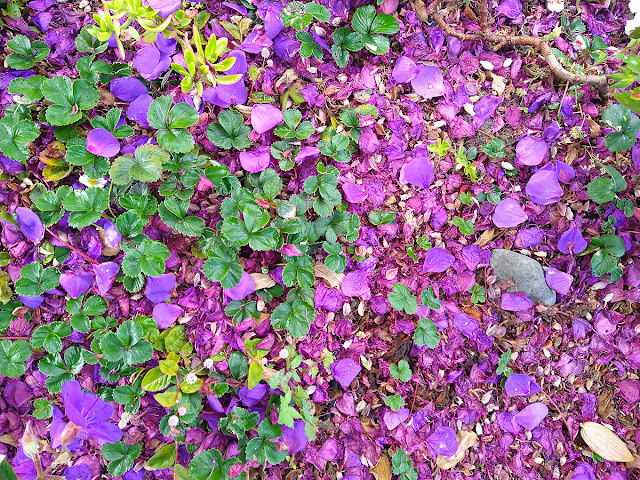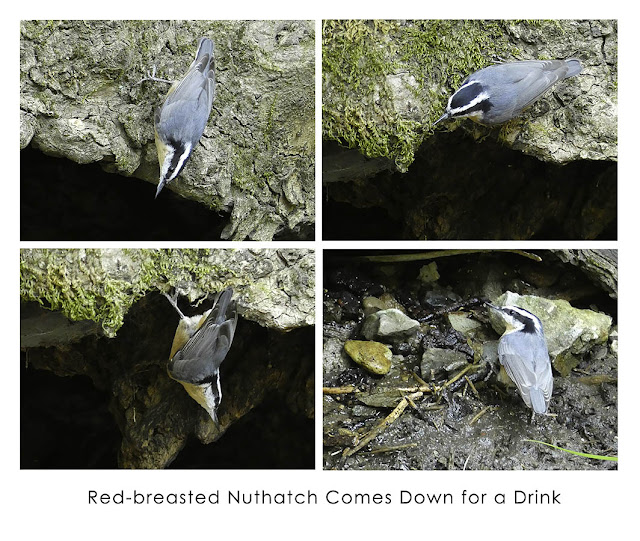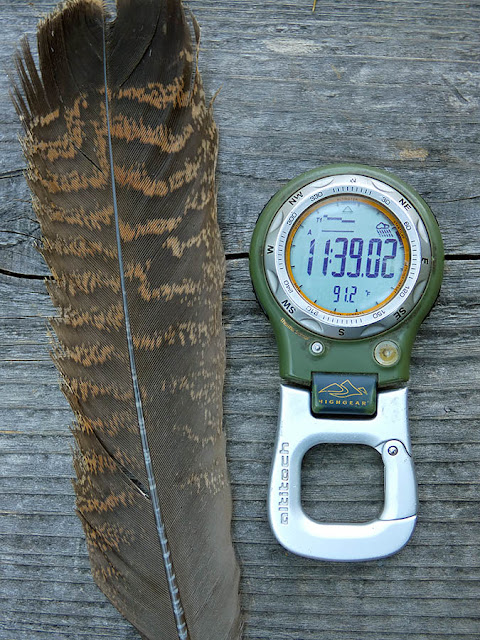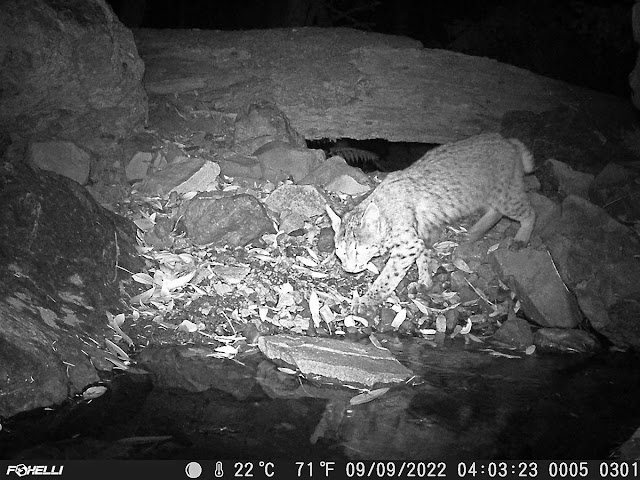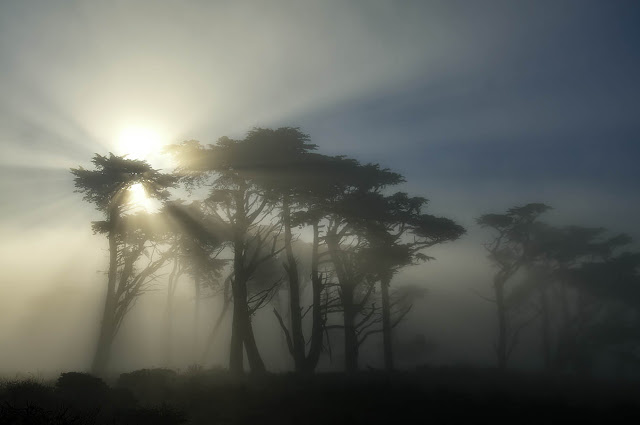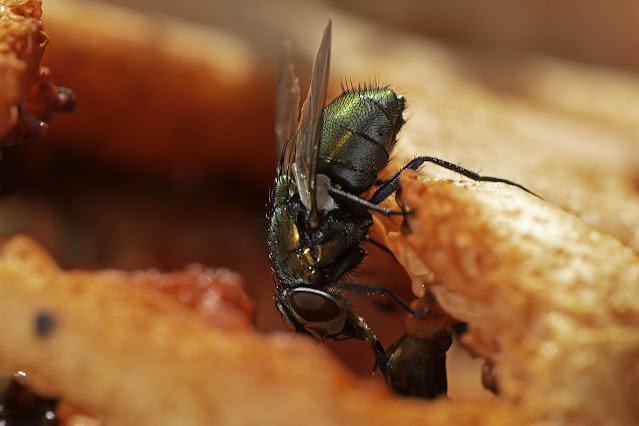 |
| September Color at Dollar Lake |
After several years of being shut down by weather, wildfire, and scheduling issues, we both figured it was this year or never. So a friend and I decided to make the long drive out to Nevada's Ruby Mountains despite the fact that rain was in the forecast, and that the best part of the Lamoille Canyon Scenic Byway, which also leads to the most popular trailhead, was scheduled to be closed for road maintenance.
The good news was that the road closure was postponed. The bad news was that inclement weather was the reason.
It had been so long since we first planned to visit the Ruby Mountains (named by early explorers who mistook garnets for rubies) that we couldn't even remember how we'd heard about this small slice of the Sierra Nevada (figuratively speaking) in the basin-and-range country near Elko, Nevada. But the scheduling gods finally granted us an opening, so we threw caution to the winds in the hope of finally kicking this place off our bucket list.
We loaded everything into my friend's VW camper van and zoomed east on I-80, up through a very smoky Sierra Nevada and into the fresh air of the desert, where the speed limit was sometimes 80 mph. We reveled in the beautiful blue skies studded with massive clouds, including distant thunderheads unleashing dark-gray curtains of rain.
Having interesting skies in September seemed like a generous bonus from the weather gods during such a long drive.
Although the daily chance of precipitation in Elko (the town next to the Ruby Mountains) rarely rises above twenty percent even in the rainy season, the National Weather Service issued a flood watch for the region this week due to "significant subtropical moisture" moving in. Yesterday, several rainfall records were broken throughout Nevada, and heavy rain remains in the forecast through tonight around Elko and the Ruby Mountains.
I mention all this because even though my friend was going to have a dry sleep in his camper van, I was going to spend the night at the Thomas Canyon Campground staving off several leaks in my North Face Lenticular tent. Luckily I'd thought to bring a towel to sop up the rivulets and puddles I noticed when I was periodically awakened during the night by heavy downpours. The ground on the nicely groomed tent pad (this was a $27/night USFS campground after all) eventually became saturated, and a pool of water formed. I was grateful that I hadn't pitched my tent where the pool was deepest.
I took stock of the situation in the morning and, despite having experienced an interesting night, I was confident that I could do it again the next night as long as the sun came out and dried my gear. I pulled up stakes for the second time (the first had been done during the night to escape the rising pool of water) and carried my tent over to the relatively dry and non-absorbent cement pad next to the picnic table so it could dry out while we drove up-canyon to see if the road had been closed.
It had not, and we were able to drive all the way up to road's end. The valley was quite beautiful, even with fog and clouds obscuring the peaks. Had we come in September 2018, we'd have been chased out by wildfire. Now it was raining almost non-stop, and we had to eat our lunch inside the van. When we finally returned to camp I found more rivulets and pools of water inside my soggy tent. The towel that had saved me the night before was still nearly saturated. It was obvious that there was no way for me to stay dry another night.
Even if I'd had a better tent, we'd have been spending all day and night being rained on, so we reluctantly decided to pack up. As I began to take down my tent I was grateful to the weather gods for hitting pause on the rain. But of course, those weather gods do have a sense of humor, and I was soon racing against the rain to get my completely drenched tent disassembled and stuffed into its sack.
I was expecting that we would descend from the Rubies to find sunshine down in Elko, but even that was not to be. Storm clouds were everywhere, and there was nowhere to dry out.
So we'd finally gotten to the Ruby Mountains--our Big Rock Candy Mountain that had turned into our White Whale--covering more than a thousand miles of road in two days. We drove through the smoke-filled Sierra with our pandemic face masks on, and the Dutch Fire closed westbound I-80 on our way home, sending us on a detour of dark and unfamiliar winding roads past Nevada City and Auburn. We got home at about 11 p.m., and our clothing smelled like smoke despite the fact that we'd had no campfire and had driven with the windows up and the air on recirculate.
I left my Nikon gear at home and did all my photography with the Panasonic FZ-80 and my smartphone. I'd like to go back someday with my "real" gear, perhaps as a stop on a more wide-ranging tour of the basin-and-range country.
Right now my tent is hanging off the back stairs to dry. It might take a while, as it's quite foggy out. I recently wrote about "sweet fog," but I might have to get on my bike and ride out somewhere to find a little sunshine.
 |
| Ominous Beauty on the Approach to the Ruby Mountains |
 |
| Heading Up Lamoille Canyon Road |
 |
| Nearly 10,000 acres burned in September 2018. |
 |
| Lamoille Canyon, September 2022 |
 |
| Tree Skeletons |
 |
| Trying to Stay Dry |
 |
| During the night of rain, I had to move the tent to the highest part of the tent pad (one side of which is the wood beam to the right of the tent) to back away from a growing pool of water. |
 |
| Rabbit Brush in Lamoille Canyon |
 |
| Lamoille Creek at Road's End, NF-660 |
 |
| Fireweed and Aspen Along Lamoille Creek |
 |
| Trail angels had left a bunch of bottled water for hikers who might not have brought their own, but there was little chance of dehydrating or getting too hot on this rainy, 55-degree day. |
 |
| On the Trail: Ruby Crest National Recreation Area |
 |
| Trailside Views Along Lamoille Creek |
 |
| Climbing Switchbacks in the Rain |
 |
| Possible Glacial Erratic on the Edge |
 |
| Pine Belt Around Dollar Lake |
 |
| Mushroom in the Pines |
 |
| Dollar Lake (9,600' elev.), a glacial tarn, has been expanded in size by the handiwork of beavers. |
 |
| The beaver lodge is that brown hump at the far end of the lake, between the trees. |
 |
| Beavers had engineered a mud-and-stick dam all around the downstream perimeter. I never saw a beaver, but a duck landed on the lake while I was there. I wondered how beaver ever got to this remote location which is surrounded by desert. |
 |
| Looking back down from near Dollar Lake, the Road's End parking area is in the center, just in front of the wall of clouds. |
 |
| Lots of weather at the base of the Rubies |
 |
| "God beams" on the way back to California. |
 |
| The sun begins to turn wildfire smoke red as it sinks into the west. |
* * *










